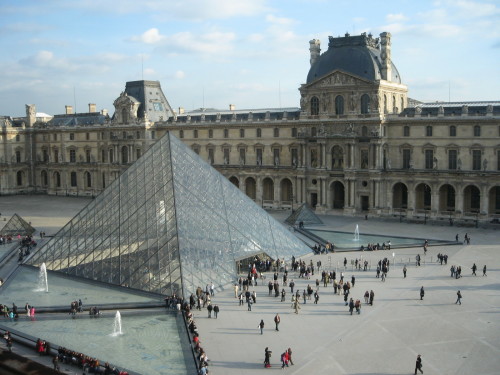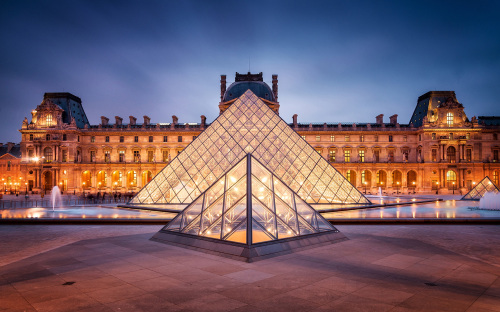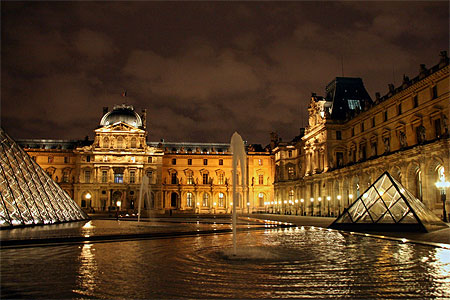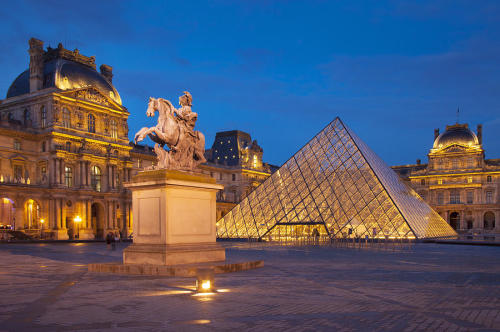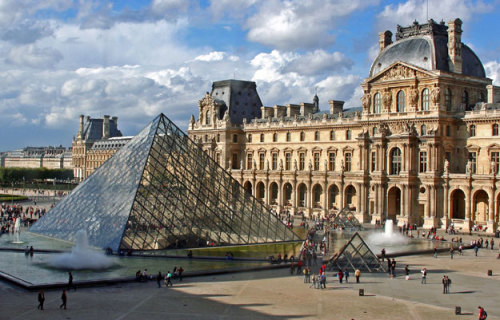The top ranking museum both nationally and globally is the Musee du Louvre, or the Louvre Museum, located in Paris, France. It’s considered not only the largest art museum in the world, but the building itself is also an important monument. Each year, over 17 million people from around the world travel to this location for a visit. It has also earned the distinction of being the world’s most visited museum.
The Museum is located within the Louvre Palace, which has a distinction, too. Most people know the Louvre as being the home to the Mona Lisa painting.
The Louvre is central to Paris, containing many exciting and inspiring collections. It will often take several days to see the entire collection.
How to Get to the Louvre
The Louvre is a distinctive building in the city, being a central landmark located right in the center of Paris. It’s on the Right Bank of the Seine, in the city’s first district.
You can hop on the Paris Metro train. You’ll need to take the connecting line 1 or 7 to Palais Royal—Musee du Louvre stop, or take the line 1 to the Louvre Rivoli stop.
Once you arrive at the Louvre, you’ll find three main entrances. If you can see the pyramid, this has the main entrance.
If you are down in the Carrousel du Louvre, an underground shopping mall, you’ll find another entrance here. The Unibail-Rodamco runs this shopping mall which contains the first ever Apple Store in France and McDonalds, which has been controversial for its proximity to a lavish mall and historical site.
The other entrance is near the western side of the Denon wing at the Porte des Lions.
History of the Louvre
The museum is just a part of the entire building. It’s located within the Louvre Palace. It was originally built by Philip II to be used as a fortress for the city in the late 12th century.
The city rapidly grew, so the fortress wasn’t required for a defensive purpose after that time. In 1546, Francis I converted it into the primary residence for the French kings. The building underwent additional construction which has become the current Louvre Palace.
By 1682, Louis XIV moved to the Palace of Versailles, leaving the Louvre as a spot where the royal collection could be displayed. From 1692 onwards, it had an excellent selection of ancient Greek and Roman sculpture.
The building has also been host to some art schools. In 1692, the Académie des Inscriptions et Belles Lettres and the Académie Royale de Peinture et de Sculpture took up residence here. The Académies were in the building for 100 years.
During the time of the French Revolution, the National Assembly declared the Louvre should officially be the museum to store the nation’s most valuable masterpieces.
It officially opened in August 1793, with a particular exhibition that included 537 paintings. This collection included works from the royal collection and works that had been confiscated from churches.
But the building wasn’t without its problems. In 1796 they discovered that they should attend to the faults of the structure. The museum was closed for five years to fix the structural issues. It reopened in 1801.
The Louvre’s collection increased during the rule under Napoleon. But after his abdication, most of the works that had been seized by his armies were returned to their rightful owners.
In 1871, the French Army, consisting of a force of Communard soldiers led by Jules Bergeret, attacked the Tuileries Palace which is in the same building. Sadly, the fire burned for 48 hours and destroyed this palace and part of the museum. Collections within the library and nearby halls were destroyed. But without the efforts of the museum staff and the Paris firemen, there might have been a whole lot more damage done.
During the reigns of Louis XVIII and Charles X, leading up to the times of the Second French Empire, the museum acquired over 20,000 pieces. Since then, the museum has gained other works through donations and bequests.
About the Collection
Director Jean-Luc Martinez oversees the Louvre. The collection is carefully curated by Marie-Laure de Rochebrune. The museum is considered more of an art museum or an art gallery for the exhibition of art or visual art. The objects are displayed on an area of over 72,735 square meters.
Paintings are most commonly found here, but you’ll also see textiles, costumes, collages, prints, sculptures and other types of design or visual art.
The collection at the Louvre has been split into eight main curatorial departments. These include Egyptian Antiquities; Near Eastern Antiquities; Greek, Etruscan and Roman Antiquities; Islamic Art; Sculpture; Decorative Arts; Paintings; and Prints and Drawings.
There are over 380,000 objects on display here, not including the ones in storage. These range from prehistorical times and up into the 21st century.
The Egyptian Antiquities Collection
The Egyptian collection alone consists of over 50,000 pieces. These include artifacts from the ancient Nile civilization dating back to 4000 BC, and up to 4th century AD. This covers the Egyptian periods from Ancient Egypt to the Byzantine periods.
New Eastern Antiquities Collection
This collection focusses on the times before the arrival of Islam. It covers Levant, Mesopotamia, and Persia. Perhaps one of the oldest artifacts is the Prince of Lagash’s Stele of the Vultures, dating from 2450 BC.
Greek, Etruscan & Roman Collection
This collection dates from Neolithic times to the 6th century. It covers the Cycladic period and up to the decline of the Roman Empire. This is perhaps one of the oldest collections at the museum, for the length of time being housed here.
Islamic Art Collection
This collection is the newest one at the museum. It covers 13 centuries and three continents. It was originally a part of the decorative arts department.
Sculpture Collection
This includes works that don’t fit within the Etruscan, Greek, or Roman Collections.
Decorative Arts Collection
This collection includes ceramics, enamels, and stained glass.
Paintings Collection
This collection has over 7500 works of art, including the infamous Mona Lisa by Leonardo da Vinci, 1503 to 1519 working dates.
Prints & Drawings Collection
This collection consists of works on paper. It began with about 8600 works from the Royal collection (Cabinet du Rol). This department opened in 1797. Today there are over 40,000 prints, 3000 drawings, and 5000 illustrated books on fie. You’ll find this collection in its own home at Pavillon de Flore, as the works need additional protection.
About the Grand Louvre Pyramid
Perhaps the next most famous structure at the Louvre is the Grand Louvre Pyramid. While the shape is ancient, this is a modern site and was meant to cover the entrance. Architect I.M. Pei designed and oversaw the building of the new structure. The pyramid was completed in 1989. After this latest addition, attendance suddenly doubled.
The pyramid isn’t as out-of-place as you may think, for their Egyptian collection in the museum is perhaps one of the most popular and iconic.
At nighttime, the entire Louvre lights up, including the museum.
The Tuileries Garden
Even though the fire completely destroyed the Tuileries Palace, and the structure subsequently demolished, you can still see the Gardens. The garden was created in 1564 for Catherine de Medici, and designed by Andre Le Notre. On-site is also a garden house called the Jeu de Paume which contains a contemporary art exhibition. This contains Jewish cultural art that had been confiscated during the 1940 to 1944 German occupation of France. Next to the Garden House is the Orangeries, which contains the famous Water Lilies painting by Claude Monet.
Visiting the Louvre
It’s often been reported that if you wait to purchase tickets on the day of your trip that you will be in for the disappointment. Tickets can sell out quickly. It’s imperative to buy tickets online in advance.
Advance priority tickets will give you the chance to skip the lineups. This is also a good idea in the cold winter months, as otherwise, you could be standing outdoors for hours at a time in the freezing rain. Tickets start at around USD 24, which is still quite affordable considering all the fantastic collections you’ll get to see inside.
It’s recommended that you choose tickets for a few days into your trip to Paris, just in case you experience any flight delays. This way you can still be confident that you’ll get to see the Louvre, even if your flight has been delayed 24 hours.
During your visit to the Louvre you can bring in your smart devices, cameras, and video cameras, but absolutely no flash photography is allowed, as it can damage the works.
Buy your tickets in advance to see the Louvre, and you’ll experience exactly what it feels like to be royalty. Walk past that long lineup of people, and see the beautiful collection of paintings and sculptures within!






